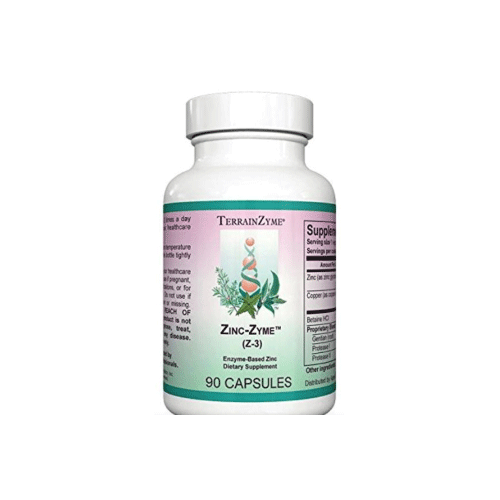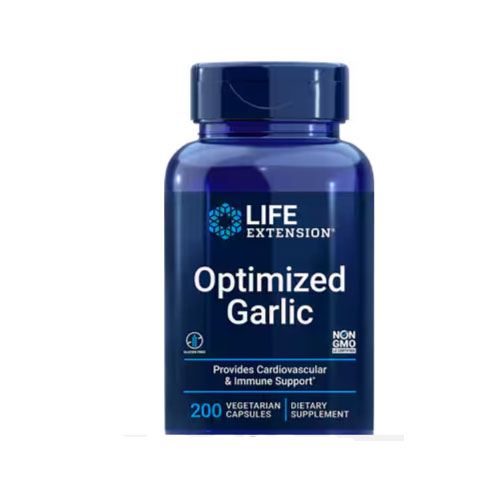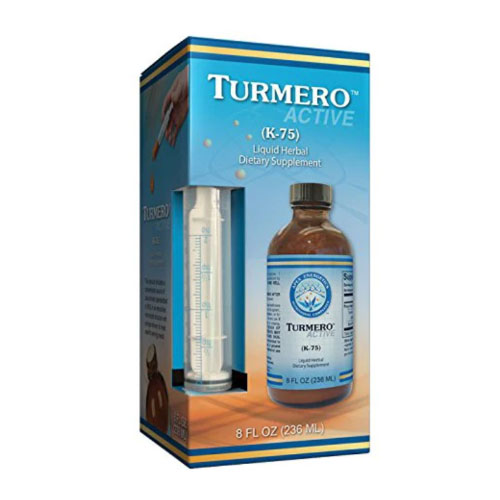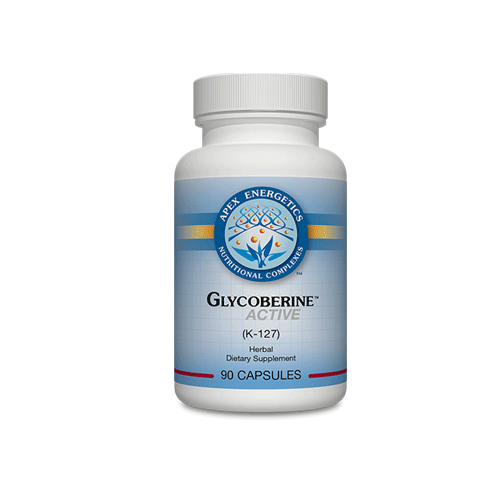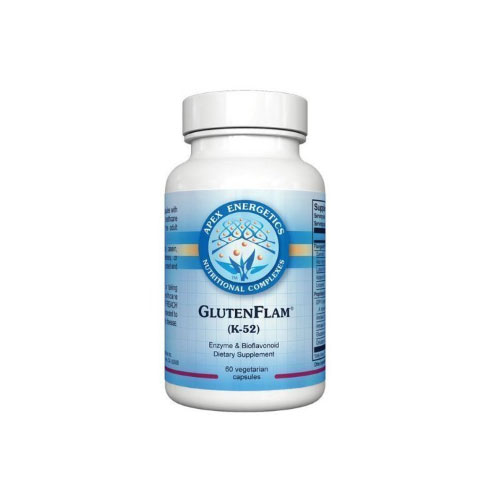Ten Steps Program to Boost Brain Health Part 3A, Step 4:
Vitamin D: The Sunshine Vitamin’s Crucial Roles
Introduction:
Welcome to Longevinex, where your health and wellness take center stage! As your dedicated health advocate, I am here to provide you with actionable insights to help you take charge of your well-being. Our focus on brain health has led us to develop a
ten-step program that empowers you to preserve and enhance your cognitive functionality.
On September 22, 2023, (2) and October 2, 2023, (3), we delved into the first three steps towards preserving cognitive function. Today, we present step 4, Vitamin D. Let’s dive in and explore the secrets to a vibrant mind!
10 Steps to a Healthy Brain: (1)
- Keep Your Blood Sugar Balanced
- Eat Healthy Fats
- Get Adequate and Restful Sleep
- Enough (but not too much) Vitamin D3 is Essential for the Brain to Function Properly.
- Get Your Gut in
- Maintain Adequate Methylation
- Balance Your Hormones
- 6 Fixes for A Healthy Heart
- Exercise
- Lifetime Learning
Knowledge of Vitamin D adequacy has evolved from merely the “Sunshine Vitamin” to playing numerous critical roles in our overall health and well-being. Research shows its importance, and despite the surprisingly widespread deficiency, ensuring we get enough Vitamin D is a crucial priority due to the benefits it provides and the risks it mitigates.
Produced on earth for more than 500 million years via sunlight exposure, a chemical in the skin called 7-dehydrocholesterol absorbs ultraviolet (UV) B radiation, converting to a pre-vitamin D3, which then transforms into vitamin D. (4)
Along with vitamins A, E, and K, Vitamin D is a fat-soluble vitamin. Unlike water-soluble vitamins such as Bs and C, which are absorbed in the bloodstream, fat-soluble vitamins dissolve in organic solvents but not water. As a result, they are stored in fat and can become toxic if ingested in excess. (5)
(For a little personal, historical background, back in my medical school dark ages, circa 1978, our instruction on Vitamin D, which lasted three minutes, was that it was a poison and never to be prescribed. The only use for Vitamin D was to prevent rickets soft bones, which “doesn’t happen in North America.” And that was the extent of our medical school training on Vitamin D.
In some circles, Vitamin D, despite a mountain of evidence to the contrary, continues to be disparaged. Click here for a “contemporary” alternative view.)
Top 9 Reasons to Maintain Adequate Vitamin D Levels:
- Bone and Muscle Health: Vitamin D is essential for calcium absorption in the intestines and maintaining adequate serum calcium and phosphate levels. Calcium and phosphorous are vital for normal bone mineralization and to control fracture rates in menopausal women and elderly men. Vitamin D deficiency leads to soft, thin, brittle Vitamin D also supports muscle function and strength. (6-7)
- Immunity: Vitamin D protects the respiratory tract against infections like influenza, pneumonia, and bronchitis in all age ” (8-9) Vitamin D affects B, T, and antigen-presenting immune cells and is involved in cellular proliferation, differentiation, and communication within the immune system. Deficiency in Vitamin D increases the risk of autoimmune diseases and infection.” (10)
- Potential Cancer Prevention: Adequate vitamin D levels are associated with reduced risks of colorectal (11) and bladder cancer.” (12) There is no association between vitamin D levels and breast, lung, and several other less common (13-17)
- Heart Health: Early research connects Vitamin D deficiency to inflammatory conditions that increase cardiovascular disease risks, such as hypertension and elevated LDL (bad) Vitamin D suppresses renin, an enzyme that maintains sodium and potassium production, keys to stabilizing blood pressure.” (18)
Vitamin D’s regulation of calcium metabolism, as noted above, affects the plasticity or hardening of the coronary arteries. Low Vitamin D levels increase the risk of cardiovascular disease, myocardial infarction, stroke, and early death.” (19)
Total cholesterol, LDL (bad) cholesterol, and triglycerides negatively correlate with Vitamin D concentrations. (35)
- Blood Sugar Control: Vitamin D supports the insulin-secreting beta-cells of the pancreas, regulating insulin sensitivity and helping control blood sugar. Adequate Vitamin D levels are inversely related to the rates of type 1 and type 2 diabetes. (20) Vitamin D supplementation improves blood glucose levels and insulin resistance in ” (21)
- Brain Function: Vitamin D receptors and activating enzymes exist in immune cells and throughout the brain. Low vitamin D levels increase the risk of multiple sclerosis, cognitive decline, Parkinson’s Disease, dementia, and Alzheimer’s (22-23)
6A. Multiple Sclerosis patients have lower Vitamin D levels versus healthy controls. Vitamin D during a relapse is lower than in MS patients in remission. Low D is associated with higher recurrent relapse rates and MRI lesion activity.” (24)
Living at higher latitudes with lower UV light exposure is associated with an increased incidence of multiple sclerosis. Springtime births are a risk factor, as wintertime gestation, lacking Vitamin D, contributes to MS risk. (25)
6B. Parkinson’s Disease patients show similar Vitamin D patterns. Adequate Vitamin D reduces Parkinson’s severity and progression by stimulating dopamine synthesis and reducing neurotoxicity. (26) To complicate matters, genetic studies link vitamin D receptor abnormalities to Parkinson’s Disease risk and progression. (27)
6C. Alzheimer’s Disease: Vitamin D reduces amyloid beta plaques, improves cognition, and promotes neuroprotection in Alzheimer’s patients. (28) As with Multiple Sclerosis and Parkinson’s patients, low Vitamin D levels increase dementia/Alzheimer’s risk. Vitamin D receptor genes are also associated with increased risk. (29)
6D. Depression: Vitamin D reduces depressive symptoms by up to 20%. It synthesizes the neurotransmitters known for their roles in depression, dopamine, and norepinephrine. Vitamin D’s effect on cytokines and stimulating neurotropic and nerve growth factors improves the anti-depressive picture, seasonal affective (SAD), and other mood disorders. (30-33)
6E. Cognitive and Executive Function: Vitamin D supplementation improves learning, memory, processing speed, concentration, the ability to start and complete projects efficiently or not, and the ability to multi-task easily, especially in winter climates where Vitamin D levels are low. (34)
- Antiinflammatory Properties-Adequate Vitamin D is neuroprotective and promotes neural repair through its antiinflammatory Vitamin D inversely correlates with proinflammatory proteins, cytokines, IL-1β, TNF-α, IL-6, IL-8, IL-17A, IL-18, and IL-33.
- Anti-Oxidant Properties: Vitamin D has proven efficacy against asthma, joint pain, psoriasis, viral, bacterial, and fungal infections, and metabolic syndrome, a group of conditions including obesity, high blood pressure, high blood sugar, and abnormal cholesterol levels, dental cavities, weight control, macular degeneration, and even (36-44)
- Sleep: Vitamin D deficiency increases and is associated with sleep difficulties, shorter sleep duration, and nocturnal awakenings in children and (45-48)
“Dr. C’s Sleep Concoction” combines
- Vitamin D 2000-5000 IU (See “How Much Vitamin D Do You Need” below)
- Melatonin 1-3 mg is a typical dose. (Rarely do we need more than 10 mg.)
- Magnesium taurate 400 mg-Start with one. If sleep remains inadequate, increase by one per week, up to Back off by one if you are too sleepy the next day.
“Dr. C’s Sleep Concoction” is dosed two hours before bedtime. Though advertised as such, melatonin is not a “sleeping” pill. Melatonin stabilizes the circadian rhythm via the perception of light and darkness. (49) It takes approximately two hours post-ingestion to take effect. (50)
Recommended Dose for Optimal Levels:
Most laboratories consider 25 hydroxyvitamin levels of 30 to 100 ng/ml ‘normal.’ “Normal” in the world of laboratory studies, for the most part, is two standard deviations, 95.4% of whatever we are measuring. If we were to stop 1000 automobiles in a row on a busy street corner and measure their Vitamin D levels, 954 of them, 95.4%, would be between 30 and 100 ng/ml. (51)
Optimally, we want our Vitamin D to be in the mid to upper ⅔ range. The midpoint for Vitamin D is 65. (30+100/2= 65) To calculate an “optimal range,” we take one standard deviation, 68%, divide that by 2, 34%, and take that number above and below our midpoint. The optimal range for Vitamin D is 50-80 ng/ml. (52) In our clinic, we make this calculation for every lab test we perform.
Vitamin D3 is the form we recommend as it is the most productive and best absorbed of the Vitamin D supplements. It comes in 1000 IU increments. For every 1000 IU supplemented with a good quality supplement, we should see an increase in 25 hydroxy vitamin D levels of approximately 8 points in about 6-8 weeks.
Vitamin D3 comes in 1000, 2000, 5000, and 10,000 IU tablets and capsules. A 2000 IU dose will increase the blood level by 16 points (2 x 8). A Vitamin D level of 35, which is ‘normal’ but not ‘optimal,’ using a 2000 IU capsule would increase your level to 53 (2 x 8=16 + 35 = 53). “Optimal,” but on the low end of optimal.
Two 2000 IU capsules would increase your Vitamin D level by 32 ng/ml to 67. 2 2000 IU caps= 4 x 8 = 32. Add the 32 to the baseline 35 in the above example, which equals 67ng/ml. With a midpoint of 65, 4000 IU supplementation is the correct dose.
Vitamin D also comes in a time-released twenty-five thousand units (equivalent to 3500 IU per day or 28 ng/ml increase in Vitamin D levels) and fifty thousand units (equivalent to 7000 IU or 56 ng/ml) once weekly doses. We use these extensively as they are convenient and inexpensive. Our biggest challenge is for our patients to remember to take them.
Take Vitamin D at bedtime. Vitamin D is not a sleeping pill but a sleep aid. (53) Vitamin D is a “pro” hormone. It improves the function of Growth Hormone (54) and Cortisol (55), our strength, energy, and stress hormones regenerated in the sleep cycle. Taking Vitamin D at bedtime aids each hormone’s metabolism.
Potential Side Effects and Contraindications:
Excess Vitamin D can result in hypercalcemia. Symptoms include nausea, vomiting, weakness, frequent urination, kidney stones, drowsiness, lethargy, and confusion. High calcium levels reduce neuronal membrane excitability in the brain and, on occasion, cause seizures.
With mild overdoses and serum levels between 100 and 140, the patient can be asymptomatic or complain of “unexplained” nausea, ringing in the ears, or vertigo. (56)
The remedy for Vitamin D overdose at these levels is discontinuing supplementation for approximately four weeks. You can recheck and recalculate your serum level or resume treatment at one-third to one-half of your previous dose.
Patients with hyperparathyroidism, namely overstimulation of the calcium-producing parathyroid gland, granuloma-forming disorders like sarcoidosis patients, those taking thiazide diuretics, digoxin, those with chronic kidney disease, or anyone with increased sensitivity to vitamin D need to be extra cautious with Vitamin D. (57)
Conclusion
Optimizing Vitamin D levels is crucial given the array of vital roles it serves in our bone, muscle, brain, mood, and immune metabolism. Adequate sunlight, food sources, and supplementation, when needed, help maintain recommended levels to unlock its many benefits.
Summary
Benefits of Vitamin D
| Strengthens bones and teeth | Reduces multiple sclerosis risk |
| Reduces respiratory infections | Improves musculoskeletal pain |
| Supports immune function | Boosts weight loss |
| Aids cancer prevention | Reduces psoriasis |
| Reduces hypertension | Fights infections |
| Improves cardiovascular health | Eases PMS symptoms |
| Regulates blood sugar | Reduces metabolic syndrome |
| Improves brain function | Improves dental health |
| Fights depression | Reduces macular degeneration |
| Eases asthma | Acts as an antioxidant |
Side Effects of Vitamin D
- Hypercalcemia
- Hypercalciuria
- Vascular and tissue calcification
- Nausea, vomiting, poor appetite
- Fatigue, mental impairment
- Arrhythmias
- Pancreatitis
- Seizures (rare-poor for Tom)
Contraindications
- Hyperparathyroidism
- Sarcoidosis
- Taking thiazide diuretics or digoxin
- Chronic kidney disease
- Vitamin D deficiency in infants
Stay tuned for Step 5 in our preserving and restoring brain health series-”Getting Your Gut in Order.”
XXX
References
- https://docs.google.com/document/d/14Ym_CTkktfYQk1WjeCVg6bVbKqQP3DA 6cAVMaL97fqc/edit
- https://longevinex.com/10-steps-for-healthy-brain-function-how-to-delay-and-pos sibly-reverse-alzheimers-disease-part-1/
- https://longevinex.com/10-steps-for-healthy-brain-function-part-2-how-to-delay-an d-possibly-reverse-alzheimers-disease/
- Wacker M, Holick MF. Sunlight and Vitamin D: A global perspective for health. 2013 Jan 1;5(1):51-108. Doi: 10.4161/derm.24494. PMID: 24494042; PMCID: PMC3897598.
- https://www.webmd.com/vitamins-and-supplements/fat-soluble-vitamins-vs-water-soluble-vitamins
- Munns et al. (2016). Global Consensus Recommendations on Prevention and Management of Nutritional Rickets. J Clin Endocrinol Metab. https://pubmed.ncbi.nlm.nih.gov/27013520/
- Weaver et (2016). The role of vitamin D in reducing fracture risk and falls in older people. Maturitas. https://pubmed.ncbi.nlm.nih.gov/27472965/
- Arboleda & Urcuqui-Inchima (2020). Vitamin D Supplementation and Respiratory J Immunol Res. https://pubmed.ncbi.nlm.nih.gov/32919790/
- Martineau et (2017). Vitamin D supplementation to prevent acute respiratory tract infections: systematic review and meta-analysis of individual participant data. BMJ. https://www.bmj.com/content/356/bmj.i6583
- Aranow (2011). Vitamin D and the immune J Investig Med. https://pubmed.ncbi.nlm.nih.gov/21527855/
- McCullough ML, Zoltick ES, Weinstein SJ, et al. Circulating vitamin D and colorectal cancer risk: An international pooling project of 17 cohorts. Journal of the National Cancer Institute 2019; 111(2):158–169.
- Zhang H, Zhang H, Wen X, et Vitamin D deficiency and increased risk of bladder carcinoma: A meta-analysis. Cellular Physiology and Biochemistry 2015;37(5):1686–1692
- Helzlsouer KJ; VDPP Steering Committee. Overview of the Cohort Consortium Vitamin D Pooling Project of Rarer American Journal of Epidemiology 2010; 172(1):4–9.
- Muller DC, Hodge AM, Fanidi A, et al. No association between circulating concentrations of vitamin D and risk of lung cancer: An analysis in 20 prospective studies in the Lung Cancer Cohort Consortium (LC3). Annals of Oncology 2018; 29(6):1468–1475.
- O’Brien KM, Keil AP, Harmon QE, et Vitamin D supplement use and risk of breast cancer by race-ethnicity. Epidemiology 2022; 33(1):37–47.
- Visvanathan K, Mondul AM, Zeleniuch-Jacquotte A, et al. Circulating vitamin D and breast cancer risk: An international pooling project of 17 cohorts. European Journal of Epidemiology 2023; 38(1):11–29.
- Travis RC, Perez-Cornago A, Appleby PN, et al. A collaborative analysis of individual participant Data from 19 Prospective Studies Assesses Circulating Vitamin D and Prostate Cancer Risk, Cancer Res (2019) 79 (1): 274–285. https://doi.org/10.1158/0008-5472.CAN-18-2318
- Mehta V, Agarwal Does Vitamin D Deficiency Lead to Hypertension? Cureus. 2017 Feb 17;9(2):e1038. doi: 10.7759/cureus.1038. PMID: 28357170; PMCID: PMC5356990.
- Wang TJ. Vitamin D and Cardiovascular Disease. Annu Rev Med. 2016;67:261-72. doi: 1146/annurev-med-051214-025146. PMID: 26768241.
- Alkharfy et al. (2013). Vitamin D supplementation in patients with diabetes mellitus type 2 on different therapeutic regimens: a one-year prospective Cardiovasc Diabetol. https://pubmed.ncbi.nlm.nih.gov/23866817/
- Krul-Poel et (2017). The Effect of Vitamin D Supplementation on Glycaemic Control in Patients with Type 2 Diabetes Mellitus: A Systematic Review and Meta-Analysis. PLoS One. https://pubmed.ncbi.nlm.nih.gov/28151979/
- Landel et (2018). Vitamin D deficiency in older adults and Alzheimer’s disease: A review. J Nutr Health Aging. https://pubmed.ncbi.nlm.nih.gov/29503356/
- Simon KC, Munger KL, Ascherio A. Vitamin D, and multiple sclerosis: epidemiology, immunology, and genetics. Curr Opin Neurol. 2012 Jun;25(3):246-51. doi: 10.1097/WCO.0b013e3283533a7e. PMID: 22547098; PMCID: PMC4815910.
- Munger K, Levin L, Hollis B, Howard N, Ascherio A. Serum 25-hydroxyvitamin D levels and risk of multiple sclerosis. 2006;296(23):2832. doi: 10.1001/jama.296.23.2832.
- Stridh P, Huang J, Hedström AK, Alfredsson L, Olsson T, Hillert J, Manouchehrinia A, Kockum I. Season of birth is associated with multiple sclerosis and disease Mult Scler J Exp Transl Clin. 2021 Dec 22;7(4):20552173211065730. doi: 10.1177/20552173211065730. PMID: 35035988; PMCID: PMC8753082.
- Fullard ME, Duda A Review of the Relationship Between Vitamin D and Parkinson’s Disease Symptoms. Front Neurol. 2020 May 27;11:454. doi:10.3389/fneur.2020.00454. PMID: 32536905; PMCID: PMC7267215.
- Redenšek S, Kristanc T, Blagus V, Trošt M and Dolžan V (2022) Genetic Variability of the Vitamin D Receptor Affects Susceptibility to Parkinson’s Disease and Dopaminergic Treatment Adverse Front. Aging Neurosci. 14:853277. doi: 10.3389/fnagi.2022.8532
- Bivona G, Lo Sasso B, Gambino CM, Giglio RV, Scazzone C, Agnello L, Ciaccio
- The Role of Vitamin D as a Biomarker in Alzheimer’s Disease. Brain Sci. 2021 Mar 6;11(3):334. doi: 10.3390/brainsci11030334. PMID: 33800891; PMCID: PMC8000099.
- Littlejohns TJ, Henley WE, Lang IA, Annweiler C, Beauchet O, Chaves PH, Fried L, Kestenbaum BR, Kuller LH, Langa KM, Lopez OL, Kos K, Soni M, Llewellyn Vitamin D and the risk of dementia and Alzheimer disease. Neurology. 2014 Sep 2;83(10):920-8. doi: 10.1212/WNL.0000000000000755. Epub 2014 Aug 6. PMID: 25098535; PMCID: PMC4153851. https://www.currentresults.com/Weather/
- Newmark HL, Newmark Vitamin D and Parkinson’s disease—a hypothesis. Mov Disord. 2007;22(4):461–8.
- Khan, , Shafiq, H., Abbas, S. et al. Vitamin D status and its correlation to depression. Ann Gen Psychiatry 21, 32 (2022). https://doi.org/10.1186/s12991-022-00406-1
- Menon V, Kar SK, Suthar N, Nebhinani N. Vitamin D, and Depression: A Critical Appraisal of the Evidence and Future Directions. Indian J Psychol Med. 2020 Jan 6;42(1):11-21. doi: 10.4103/IJPSYM.IJPSYM_160_19. PMID: 31997861; PMCID:
- Cui X, Eyles Vitamin D and the Central Nervous System: Causative and Preventative Mechanisms in Brain Disorders. Nutrients. 2022 Oct 17;14(20):4353. doi: 10.3390/nu14204353. PMID: 36297037; PMCID: PMC9610817.
- Sultan S, Taimuri U, Basnan SA, Ai-Orabi WK, Awadallah A, Almowald F, Hazazi
- Low Vitamin D and Its Association with Cognitive Impairment and J Aging Res. 2020 Apr 30;2020:6097820. Doi: 10.1155/2020/6097820. PMID: 32399297; PMCID: PMC7210535.
- Gonzalez-Gil AM, Enriquez C, Garcia-Rivas G, Elizondo-Montemayor L. Correlation of Vitamin D with Inflammatory Cytokines, Atherosclerotic Parameters, and Lifestyle Factors in the Setting of Heart Failure: A 12-Month Follow-Up Study. Int J Mol Sci. 2019 Nov 19;20(22):5811. doi: 3390/ijms20225811. PMID: 31752330; PMCID: PMC6887713.
- Brehm et (2009). Vitamin D insufficiency in asthmatic children: a randomized clinical trial. Am J Respir Crit Care Med. https://pubmed.ncbi.nlm.nih.gov/19164789/
- Straube et (2015). Vitamin D for the treatment of chronic painful conditions in adults. Cochrane Database Syst Rev. https://pubmed.ncbi.nlm.nih.gov/26026158/
- Mason et (2014). Vitamin D3 supplementation during weight loss: a double-blind randomized controlled trial. Am J Clin Nutr. https://pubmed.ncbi.nlm.nih.gov/24472635/
- Riek et (2013). Vitamin D supplementation suppresses differentiation of T helper 17 cells and the resulting RORγt overexpression and autoimmunity in autoimmune arthritis. Rheumatology (Oxford). https://pubmed.ncbi.nlm.nih.gov/23192904/
- Greiller & Martineau (2015). Modulation of the immune response to respiratory viruses by vitamin D. Nutrients. https://pubmed.ncbi.nlm.nih.gov/26184361/
- Zerwekh (2008). Blood biomarkers of vitamin D Am J Clin Nutr. https://pubmed.ncbi.nlm.nih.gov/18541546/
- Ju et (2018). The Role of Vitamin D in Reducing Cardiovascular Disease Risk and Progression: A Review of Mechanistic Pathways. Curr Atheroscler Rep. https://pubmed.ncbi.nlm.nih.gov/30424893/
- Grant (2011). The role of vitamin D in reducing dental J Public Health Dent. https://pubmed.ncbi.nlm.nih.gov/22162194/
- Parekh et (2007). Association between Vitamin D and Age-Related Macular Degeneration in the Third National Health and Nutrition Examination Survey, 1988 Through 1994. Arch Ophthalmol. https://jamanetwork.com/journals/jamaophthalmology/fullarticle/415483
- Romano F., Muscogiuri G., Di Benedetto E., Zhukouskaya V.V., Barrea L., Savastano , Colao A., Di Somma C. Vitamin D and Sleep Regulation: Is there a Role for Vitamin D? Curr. Pharm. Des. 2020;26:2492–2496. doi: 10.2174/1381612826666200310145935.
- Muscogiuri G., Barrea L., Scannapieco M., Di Somma C., Scacchi M., Aimaretti , Savastano S., Colao A., Marzullo P. The lullaby of the sun: The role of vitamin D in sleep disturbance. Sleep Med. 2019;54:262–265. doi: 10.1016/j.sleep.2018.10.033.
- Al-Shawwa , Ehsan Z., Ingram D.G. Vitamin D and sleep in children. J. Clin. Sleep Med. JCSM Off. Publ. Am. Acad. Sleep Med. 2020;16:1119–1123. doi: 10.5664/jcsm.8440.
- Gao , Kou T., Zhuang B., Ren Y., Dong X., Wang Q. The Association between Vitamin D Deficiency and Sleep Disorders: A Systematic Review and
Meta-Analysis. Nutrients. 2018;10:1395. doi: 10.3390/nu10101395.
- https://www.nccih.nih.gov/health/melatonin-what-you-need-to-know#:~:text=Melat onin%20is%20a%20hormone%20that,in%20the%20body%20beyond%20sleep.
- https://www.hopkinsmedicine.org/health/wellness-and-prevention/melatonin-for-sl eep-does-it-work
- https://www.questdiagnostics.com/healthcare-professionals/about-our-tests/endo crine-disorders/vitamin-d-numbers
- Kennel KA, Drake MT, Hurley Vitamin D deficiency in adults: when to test and how to treat. Mayo Clin Proc. 2010 Aug;85(8):752-7; quiz 757-8. Doi: 10.4065/mcp.2010.0138. PMID: 20675513; PMCID: PMC2912737.
- Abboud M. Vitamin D Supplementation and Sleep: A Systematic Review and Meta-Analysis of Intervention Studies. Nutrients. 2022 Mar 3;14(5):1076. doi: 3390/nu14051076. PMID: 35268051; PMCID: PMC8912284.
- Fernández-Cancio, P. Andaluz, N. Torán, C. Esteban, A. Carrascosa, L. Audí; Vitamin D Stimulates Growth Hormone-Insulin-Like Growth Factor (GH-IGF) Gene Axis Expression and Potentiates GH Effect to Reverse the Inhibition Produced by Glucocorticoids in Human Growth Plate Chondrocytes. Hormone
Research 1 February 2007; 67 (Suppl. 1): 204–205. https://doi.org/10.1159/000097582
- https://cushingsdiseasenews.com/news/low-vitamin-d-levels-cushings-disease-p atients-improved-supplements/
- https://my.clevelandclinic.org/health/diseases/24750-vitamin-d-toxicity-hypervitam inosis-d
- Robien K, Oppeneer SJ, Kelly JA, Hamilton-Reeves JM. Drug-vitamin D interactions: a systematic review of the literature. Nutr Clin Pract. 2013 Apr;28(2):194-208. doi: 1177/0884533612467824. Epub 2013 Jan 10. PMID: 23307906; PMCID: PMC5623087.

